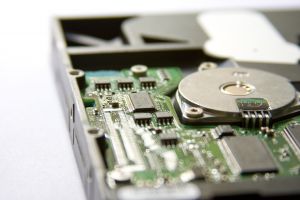Research involving scientists from The University of Nottingham in the UK is pioneering a new method of studying and making molecules.
The work, reported in Nature Materials, could pave the way for the production of nanomaterials for use in a new generation of computers and data storage devices that are faster, smaller and more powerful.
The Nottingham research group, led by Dr Andrei Khlobystov in the University’s School of Chemistry, specialise in the chemistry of nanomaterials, and has been studying carbon nanotubes as containers for molecules and atoms.
Carbon nanotubes are remarkable nanostructures with a typical diameter of 1-2 nanometres, which is 80,000 times smaller than the thickness of a human hair.
Over the past few years, the researchers have discovered that physical and chemical properties of molecules inserted into carbon nanotubes are very different to the properties of free molecules.
This presents a powerful mechanism for manipulating the molecule, harnessing their functional properties, such as magnetic or optical, and for controlling their chemical reactivity.
The latest study is a collaboration between Dr Khlobystov’s chemical nanoscientists, theoretical chemists based in the University’s School of Chemistry and electron microscopists from Ulm University in Germany.
Working together, they have demonstrated that carbon nanotubes can be used as nanoscale chemical reactors and chemical reactions involving carbon and sulphur atoms held within a nanotube lead to the formation of atomically thin strips of carbon, known as graphene nanoribbon, decorated with sulphur atoms around the edge.
"Graphene nanoribbons possess a wealth of interesting physical properties making them more suitable for applications in electronic and spintronic devices than the parent material graphene — the discovery of which attracted the Nobel Prize for Physics last year for University of Manchester scientists Professors Andre Geim and Konstantin Novoselov," Dr Khlobystov said.
"Nanoribbons are very difficult to make but the Nottingham team’s strategy of confining chemical reactions at the nanoscale sparks spontaneous formation of these remarkable structures.
"The team has also discovered that nanoribbons — far from being simple flat and linear structures — possess an unprecedented helical twist that changes over time, giving scientists a way of controlling physical properties of the nanoribbon, such as electrical conductivity."
Devices based on nanoribbons could potentially be used as nano-switches, nano-actuators and nano-transistors integrated in computers or data storage devices.











